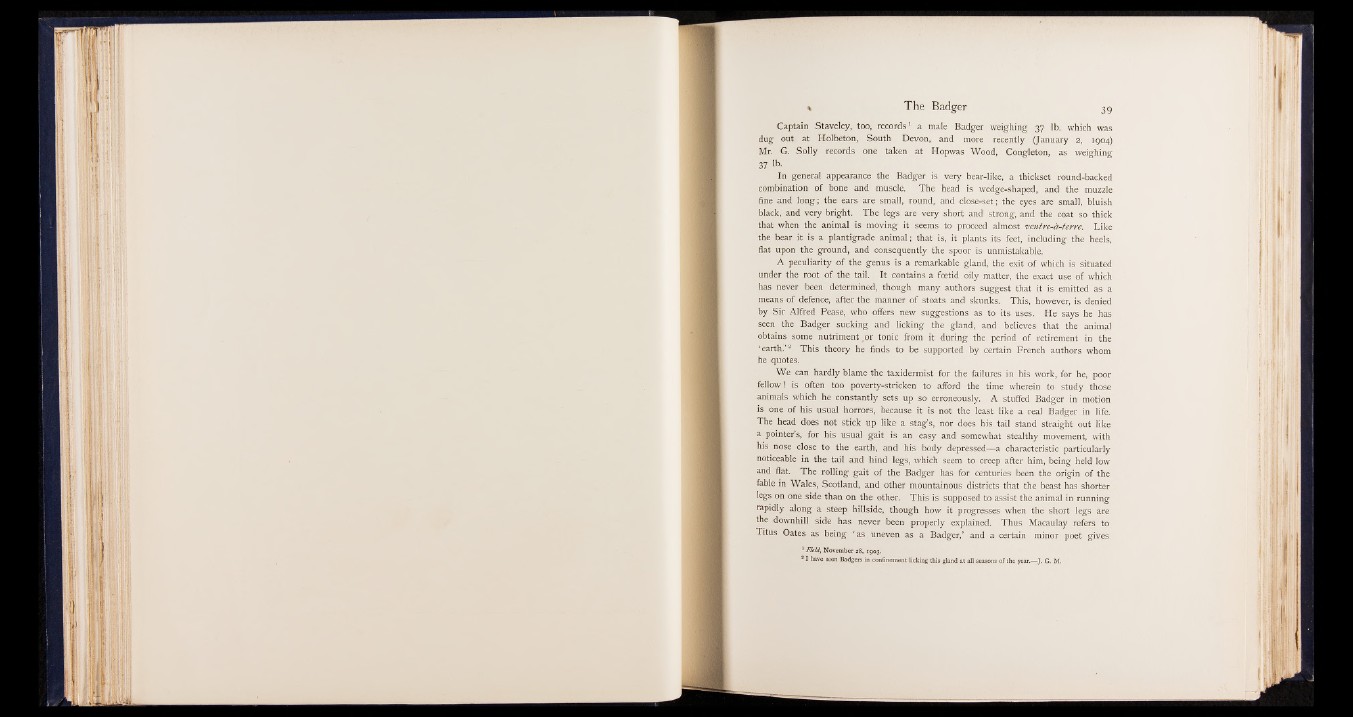
Captain Staveley, too, records1 a male Badger weighing 37 lb. which was
dug out at Holbeton, South Devon, and more recently (January 2, 1904)
Mr. G. Solly records one taken at Hopwas Wood, Congleton, as weighing
37 lb-
In general appearance the Badger is very bear-like, a thickset round-backed
combination of bone and muscle. The head is wedge-shaped, and the muzzle
fine and long; the ears are small, round, and close-set; the eyes are small, bluish
black, and very bright. The legs are very short and strong, and the coat so thick
that when the animal is moving it seems to proceed almost ventre-a-terre. Like
the bear it is a plantigrade animal; that is, it plants its feet, including the heels,
flat upon the ground, and consequently the spoor is unmistakable.
A peculiarity of the genus is a remarkable gland, the exit of which is situated
under the root of the tail. It contains a foetid oily matter, the exact use of which
has never been determined, though many authors suggest that it is emitted as a
means of defence, after the manner of stoats and skunks. This; however, is denied
by Sir Alfred Pease, who offers new suggestions as to its uses. He says he has
seen the Badger sucking and licking the gland, and believes that the animal
obtains some nutriment #or tonic from it during the period of retirement in the
‘ earth.’ 2 This theory he finds to be supported by certain French authors whom
he quotes.
We can hardly blame the taxidermist for the failures in his work, for he, poor
fellow! is often too poverty-stricken to afford the time wherein to study those
animals which he constantly sets up so erroneously. A stuffed Badger in motion
is one of his usual horrors, because it is not the least like a real Badger in life.
The head does not stick up like a stag’s, nor does his tail stand straight out like
a pointers, for his usual gait is an easy and somewhat stealthy movement, with
his nose close to the earth, and his body depressed—a characteristic particularly
noticeable in the tail and hind legs, which seem to creep after him, being held low
and flat. The rolling gait of the Badger has for centuries been the origin of the
fable in Wales, Scotland, and other mountainous districts that the beast has shorter
legs on one side than on the other. This is supposed to assist the animal in running
rapidly along a steep hillside, though how it progresses when the short legs are
the downhill side has never been properly explained. Thus Macaulay refers to
Titus Oates as being ‘ as uneven as a Badger,’ and a certain minor poet gives
1 Field, November 28, 1903.
2 * have seen Badgers in confinement licking this gland at all seasons of the year.—J. G. M.